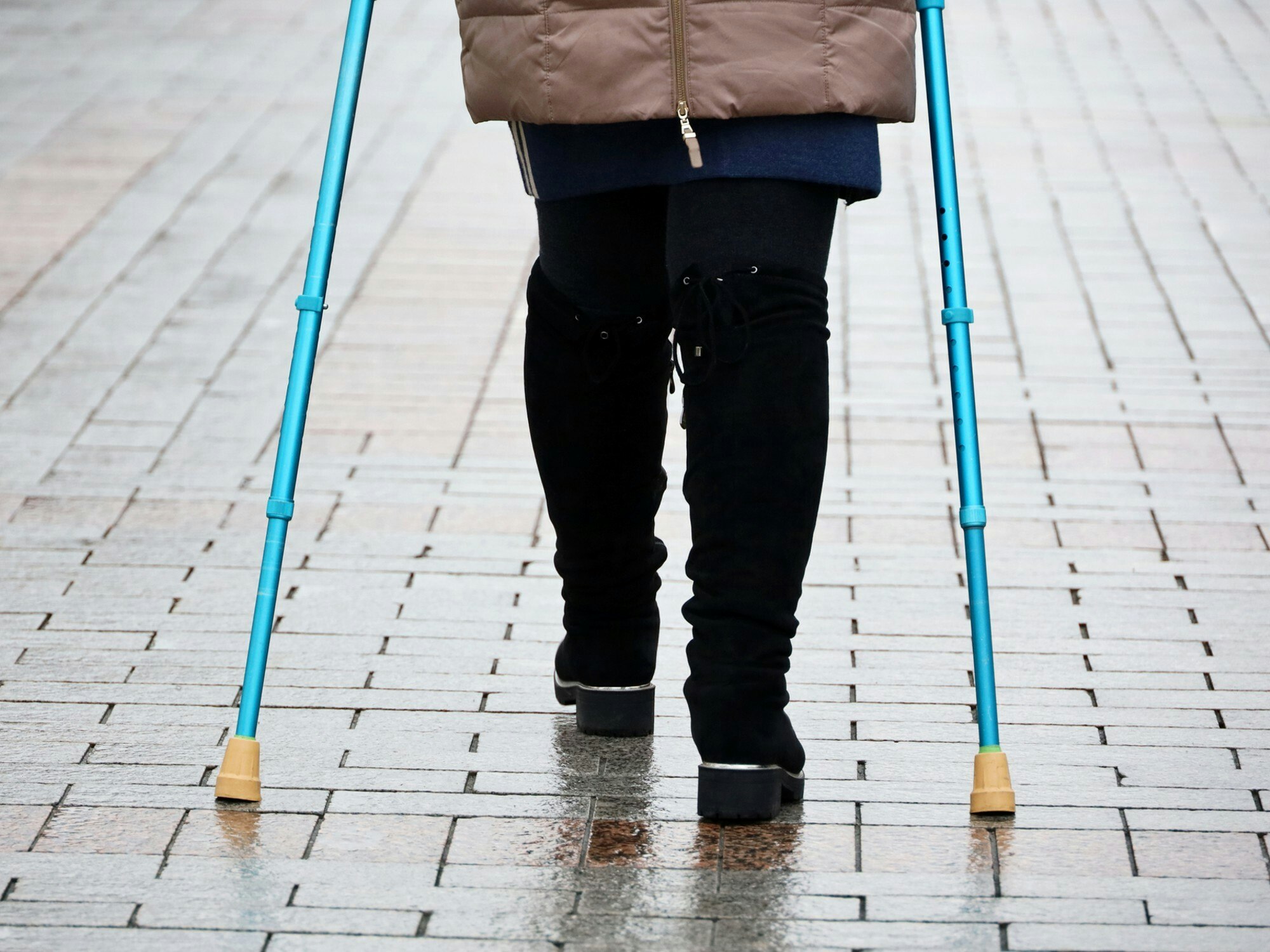Staying safe in wet weather as a person with disability
Last updated

Wet weather can be a safety risk when it causes slippery surfaces, particularly for people who use mobility aids, wheelchairs or electric scooters and those who are blind or have low vision.
Key points
- For people with blindness or low vision and those using mobility aids, wheelchairs or scooters, wet weather can pose a danger
- There are some things to keep in mind that can protect your safety in wet weather
- There are steps the community can take to improve safety in public places
Reducing the risk of danger during periods of wet weather can help you to stay safe and avoid injury.
Falls can be dangerous, especially as people age, as nearly one in three older people in Australia have had a fall within the last year and one in five have been hospitalised from a fall.
What can you do?
There are several easy, quick and cheap steps you can take to improve the safety of your personal environment.
Anti-slip floor mats are a safety item that can be used on floors in your home all year round, but can be even more important when tiles are cold and possibly damp from the moisture in the air.
Grips on any grab rails inside or outside your home and anti-slip plates on ramps are a good idea to help you safely use your home adjustments.
Make sure the tread on any wheels you use — for a manual or electric wheelchair or an electric scooter for example — is enough to prevent sliding.
Wear appropriate footwear for any surfaces you might walk on; the more tread you have on your shoes the less likely you are to slip and rubber soles are more slip-resistant than vinyl or leather.
Be careful on floors inside your house or other buildings if you have just come from outside as water or mud on shoes can make indoor floors very slippery.
Don’t attempt to get through any area affected by flooding, whether you are walking, using a wheelchair or driving. Flood water can hide dangers beneath the surface such as obstacles and debris which can cause injury. It can also be very difficult to see how fast the water is moving and you could be swept away without control of where you’re going.
What can the community do?
Organisations should have a policy that addresses what to do to eliminate or control a trip, slip or fall hazard on their premises.
This is for the safety of visitors, clients and staff to prevent injury and taking reasonable steps to address the risk of slipping is a legal requirement.
Having a level access point at the entry is a safety and accessibility feature for all weather conditions, but having it under the cover of a roof or verandah can be even better in winter.
Ramps should have anti-slip plates or coating installed and grips for handrails can also be considered. Handrails can be particularly difficult to hold onto if they are metal and outdoors where the rain can wet the rails or cold conditions like fog or frost can cause moisture to gather.
Cleaning any plant growth, mould or dead leaves away from paths and entrances ensures there is no damp organic matter causing a slipping hazard.
Indoor surfaces should be kept dry, paying close attention to entrances where people might bring water in on their shoes, jackets or umbrellas.
Winter weather can also make the general environment dark, so having well-lit pathways, corridors, entries and exits improves safety for people with low vision and tripping hazards like cords or bumps in the floor need to be clearly and brightly marked.
Have you got any more winter tips?
Let the team at Disability Support Guide know on social media.
For more information related to disability news, subscribe to the FREE weekly newsletter.
Related content:
Protecting yourself from getting sick during winter
Safe post COVID-19 pandemic activities